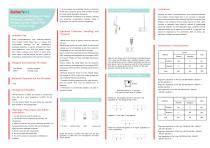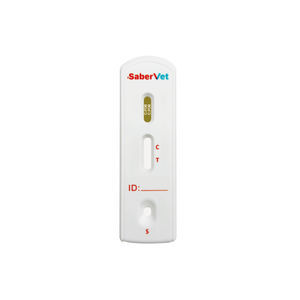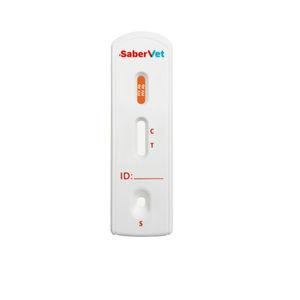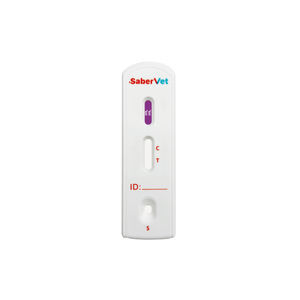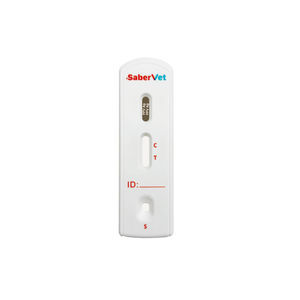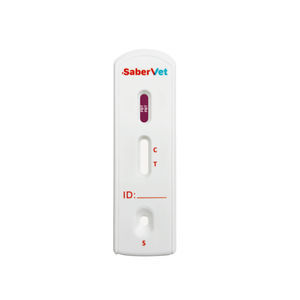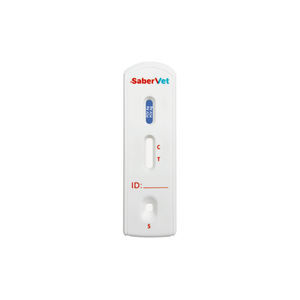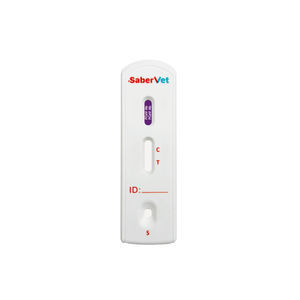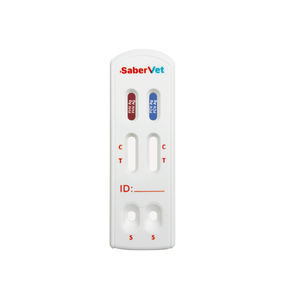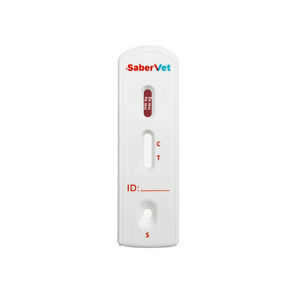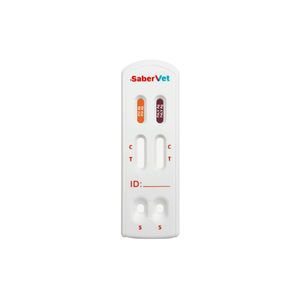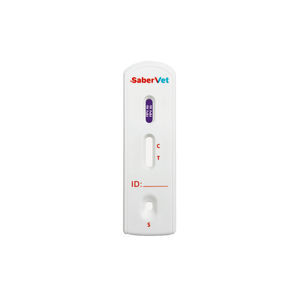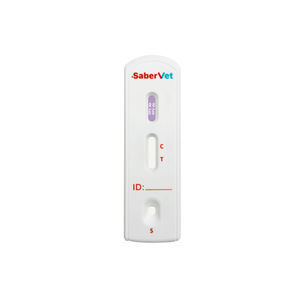
- Le Laboratoire
- Médecine de laboratoire
- Test rapide pour maladies infectieuses
- Hangzhou Antigenne Technology Co. Ltd
- Société
- Produits
- Catalogues
- News & Trends
- Salons
Test rapide pour maladies infectieuses SaberVet vétérinairepour félinsde sang
Ajouter à mes favoris
Ajouter au comparateur
Vous voulez acheter directement ?
Rendez-vous sur notre Shop.
Caractéristiques
- Pathologie
- pour maladies infectieuses
- Domaine d'application
- vétérinaire
- Patient
- pour félins
- Type d'échantillon
- de sang, sérum, de sang total, biologique
- Mode d'analyse
- par immunoanalyse, à flux latéral
- Format
- cassette
Description
SaberVet Test rapide de détection des anticorps de l'anaplasme félin proposé par Antigène est un test immunologique à flux latéral destiné à la détection qualitative d'anticorps spécifiques de l'anaplasme félin (F.ANA) dans des échantillons de sérum, de plasma ou de sang total de félins. Le test est utile pour la détermination de l'infection par F.ANA.
Description
Border disease is also known as anaplasmosis, anaplasmosis has almost no cell plasma, is a dense, homogeneous, round structure, with a diameter of 0.3~1.0 μm, and can be parasitized on erythrocytes, platelets, and neutrophils of animals and humans, such as cows, sheep, dogs, cats, deer, and so on.
1. symptômes cliniques
Infected cats cause the onset of clinical manifestations of high fever (39.5 ℃), shortness of breath, lung respiratory tone enhancement, eye discharge, checking the skin found to have been damaged by tick wounds. It can also cause thrombocytopenia, enlarged lymph nodes, weight loss and blood abnormalities.
2.Transmission pathways
There are two main ways of transmission: one is the biological transmission of ticks and blood-sucking insects, of which male ticks are the main ones; the other is the mechanical transmission of other blood-sucking insects such as gadflies, stable flies, mosquitoes, and blood pollutants containing the insect bodies.
3. le diagnostic clinique
There are several clinical diagnostic methods for this disease. Kiemsa staining microscopy method: observe the plasma-free bodies in the red blood cells through microscope, but the detection rate is low, and the invasion rate needs to be more than 0.5% in order to make a positive diagnosis.
Salons
Rencontrez ce fournisseur au(x) salon(s) suivant(s)

Autres produits Hangzhou Antigenne Technology Co. Ltd
Félin
Recherches associées
- Test de diagnostic rapide de sang
- Test rapide à flux latéral
- Test rapide immunologique
- Test de diagnostic rapide cassette
- Test de diagnostic rapide pour virus
- Test de diagnostic rapide sérum
- Test de diagnostic rapide plasma
- Test rapide pour maladies infectieuses
- Test de diagnostic rapide de sang total
- Test rapide de maladies respiratoires
- Test rapide urinaire
- Test de diagnostic rapide pour bactéries
- Test rapide de fèces
- Test de diagnostic rapide clinique
- Test de diagnostic rapide nasal
- Test rapide obstétrique/gynécologique
- Test rapide fluide oral
- Test rapide pour chien
- Test de diagnostic rapide de laboratoire
- Test de diagnostic rapide de coronavirus
* Les prix s'entendent hors taxe, hors frais de livraison, hors droits de douane, et ne comprennent pas l'ensemble des coûts supplémentaires liés aux options d'installation ou de mise en service. Les prix sont donnés à titre indicatif et peuvent évoluer en fonction des pays, des cours des matières premières et des taux de change.


